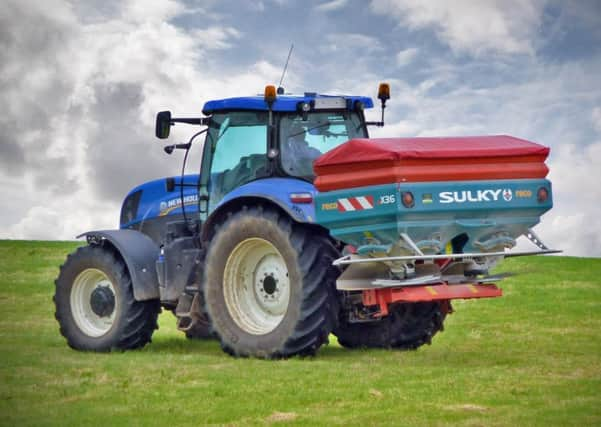DAERA Management Notes: Dairying


Research at AFBI has shown Calcium Ammonium Nitrate (CAN) is the most effective source of fertiliser N during the summer months.
The CAFRE Crop Nutrient Recommendation for third cut silage at soil index phosphate 2 and potash 1 shows that 250kg of fertiliser product per hectare (two bags per acre) of a 22:0:10 type fertiliser and 16m3 per hectare of dairy cow slurry (1,400 gallons per acre) can meet third cut needs. A sulphur containing fertiliser should be used, with an application rate of up to 40kg per hectare.
Pre reseed drainage repair
Advertisement
Hide AdAdvertisement
Hide AdFields for reseeding may benefit from improvements to drainage or soil aeration.
Clean out sheughs that have become blocked over time with silt or grass. Examine outflows from existing shores to ensure they are still running. If new drains are needed it is important they are planned and designed as the most appropriate solution for the site.
Soil compaction
Compacted soil has been compressed into a solid layer restricting root growth and reducing grass response to nitrogen. Dig test holes at least 40cm deep with a spade to see the extent of the problem and the depth of any compacted layer. Visible signs of compaction include a structure that is hard to break up, shallow roots growing horizontally, few worms present, a bad smell and grey colour/brown mottling. The depth of the compacted layer determines the type of machine that should be used to rectify the problem.
Whole crop ready to harvest
Walk your whole crops and assess readiness for cutting by stripping the grain from a number of ears and squeezing it between your fingers. When the grain texture has passed the sticky ‘brie cheese’ stage and is like a drier ‘soft cheddar’ the crop is ready for cutting (approximately 40% dry matter). Standing crops are at various stages of maturity:
Advertisement
Hide AdAdvertisement
Hide AdCrops that received a comprehensive spray programme remain green with the ears starting to turn yellow. On inspection the grain texture is not completely ‘soft cheddar’ but also produces some ‘soft brie’. The percentage dry matter of these crops is in the low 30s and they will require further inspection, but are probably not more than seven days from harvest.
Crops that showed some disease are now at the correct stage and increasing in dry matter. With potential ‘drying rates’ up to 2.5 units of dry matter daily, there is a limited harvest window. If dry matters exceed 45% harvest the crop with equipment that incorporates a mill unit.
Harvesting and silo management have an effect on the fermented silage. Direct cutting reduces grain loss. A long stubble gives a higher energy silage, a short stubble a higher fibre silage. Make sure the additive is applied at the correct rate for the crop dry matter and yield. Preferably chop to 25mm and fill a narrow pit that has side sheeting on the walls. Roll well during filling and cover the crop with a good layer of grass before covering with heavy gauge polythene and tyres.
July jobs checklist
To maintain sward quality top grazing swards containing old dead grass or seed heads.
Advertisement
Hide AdAdvertisement
Hide AdCalibrate parlour and out of parlour feeders to ensure accurate feeding.
Where necessary, burn off swards towards the end of July to allow for reseeding during August.
Assess heifer performance. Are they performing to meet desired targets?